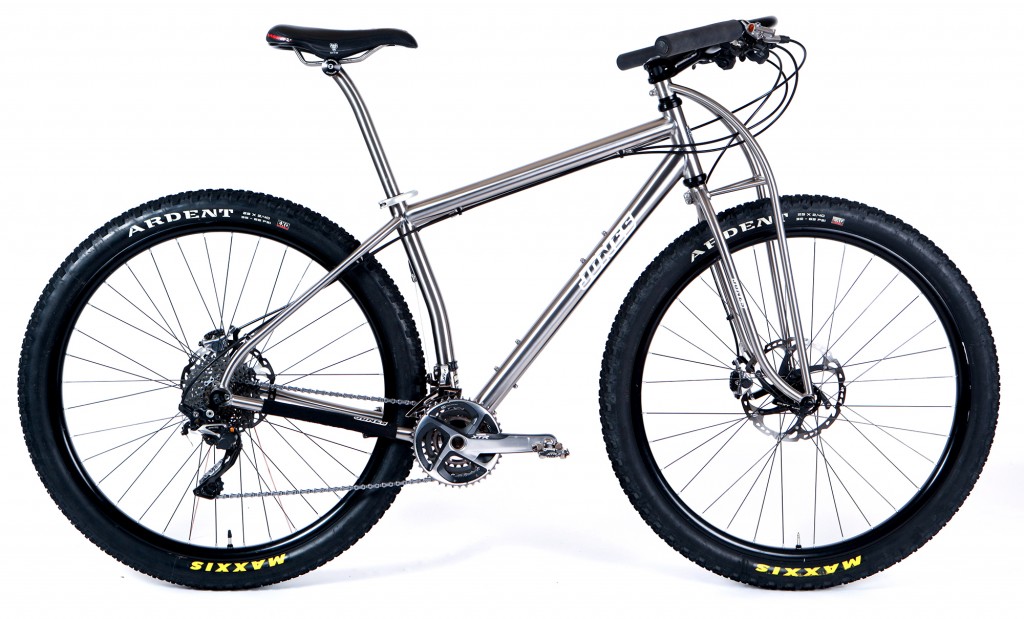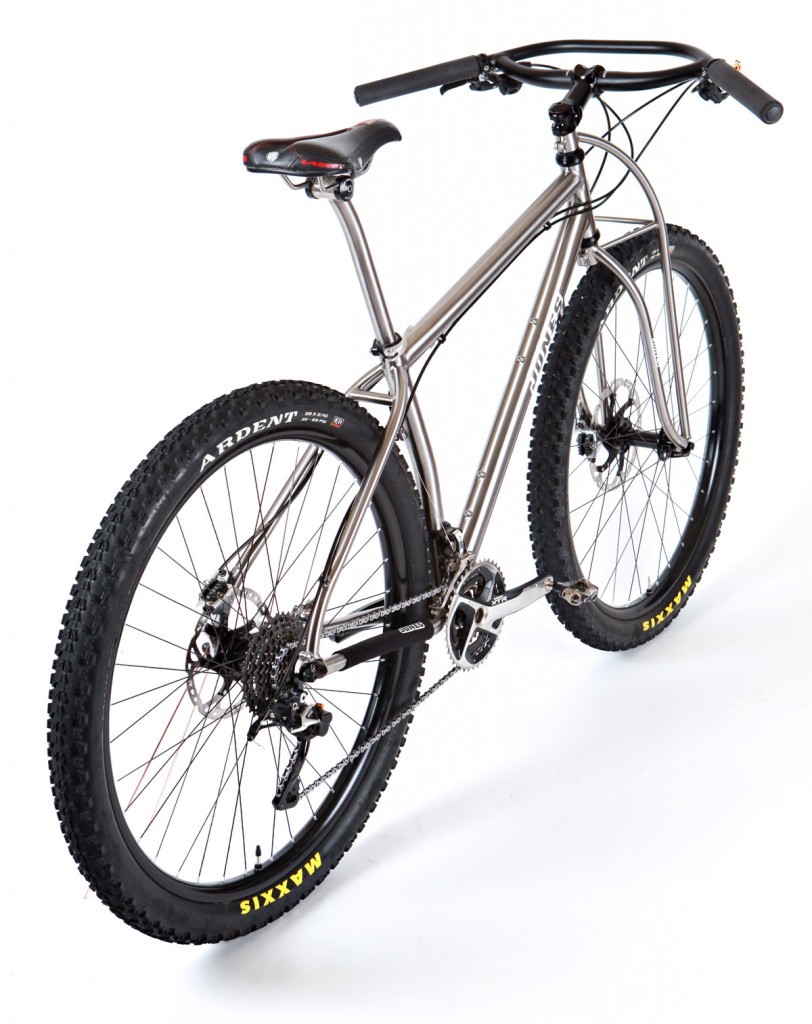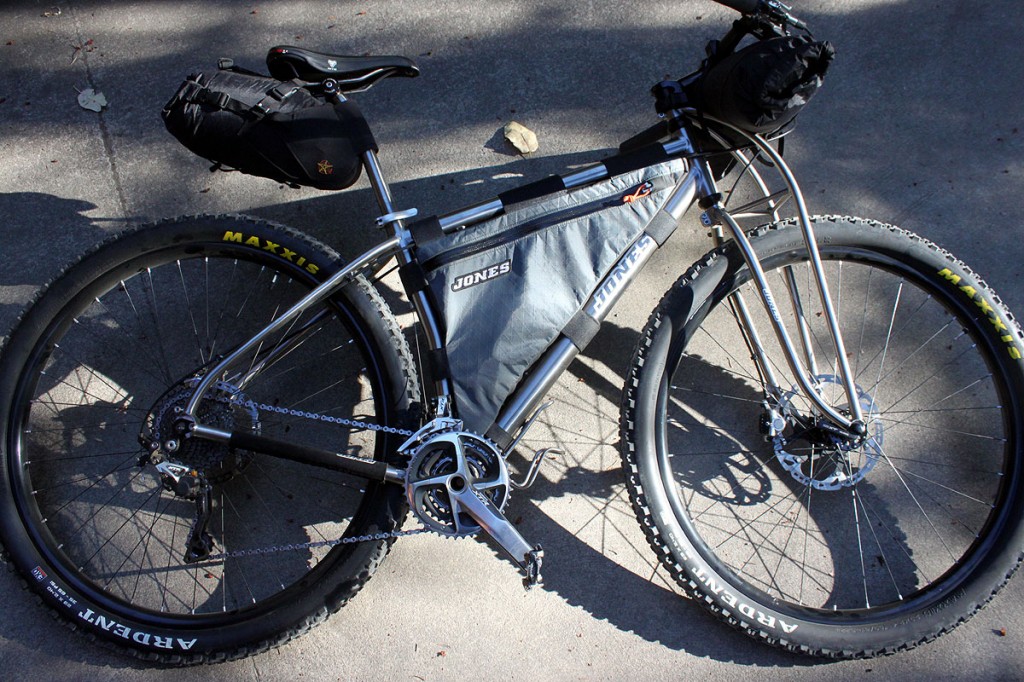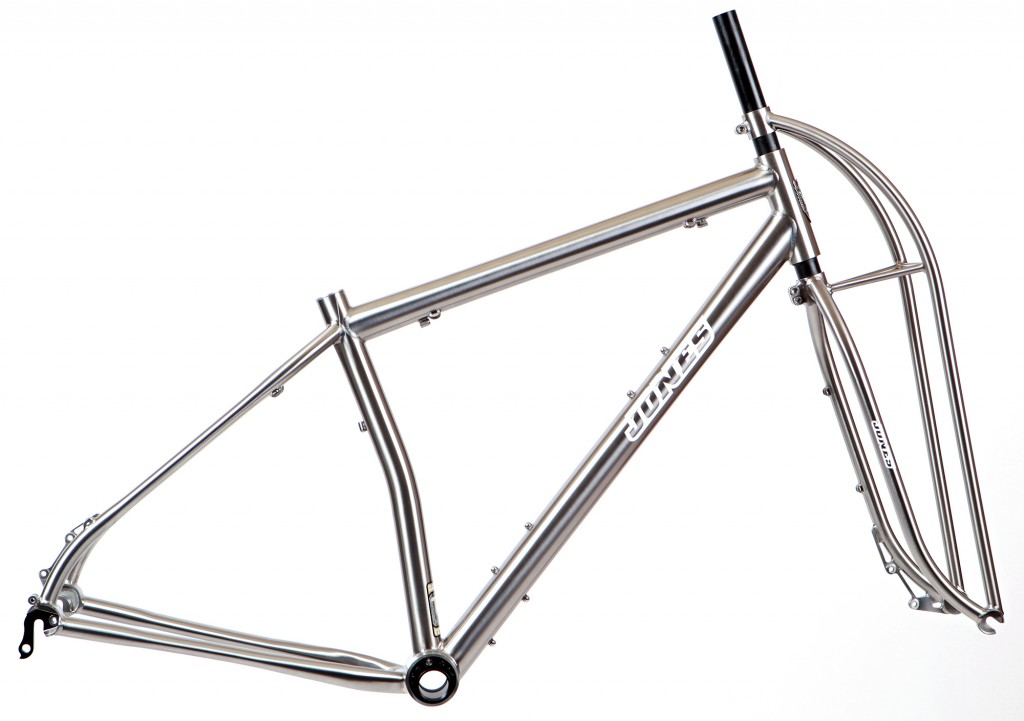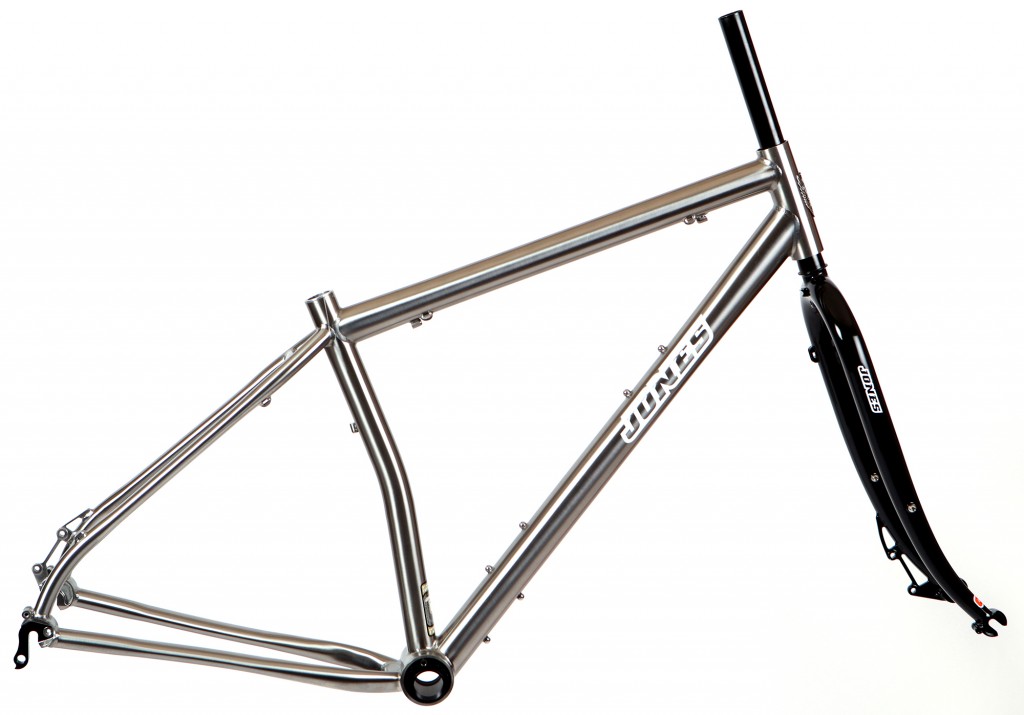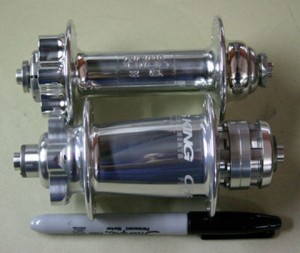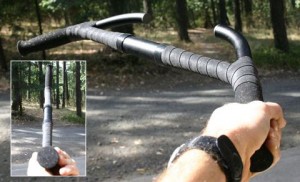It has been a while (eg 2008) since you could get a Jones titanium Diamond frame. We have been receiving numerous requests for us to make more and we are finally pleased to announce that we’re doing a small run. They should be ready to ship by mid-November. We are taking pre-orders for frame set, rolling chassis and complete bikes now. The titanium Diamond frame with either a Jones Ti Truss fork or the Jones steel Unicrown fork.
It’s a bicycle. You can ride it (hard) off-road, as a mountain bike, on road and dirt as a (fully-laden) touring bike, with gears or as a singlespeed. You can run a fat front tire, you can run slicks – it really is extremely capable. Versatility without compromise. Pure bicycle.
The tubing is most certainly to my individual specification. The top tube is a big 1.5 inch diameter tube and the down tube, stays and seat tube are similarly stout. The tubes are bigger than normal and it makes this frame about 300g heavier than comparable titanium frames but the overall ride is what it is about (not just frame weight). The bigger tubing helps make the ride. I’ve added a gusset to the bottom bracket / chainstay junction too which stiffens things up. Testing this bike has been great and it really is my best Diamond Ti bike yet. An excellent blend of stiffness, strength and comfort. The tubing diameters give the bike tremendous lateral stiffness (perhaps to Spaceframe levels – I’ll have to have them assessed on a rig) but there’s still the subtle spring of the Ti tubing taking the sting out of the vertical (although not quite the vertical compliance of a Spaceframe). I’m not comparing the two frames to rank them – they each have their merits – but to perhaps help anyone out there who might already have a Jones they can use as a benchmark. The Ti Diamond frame is lighter than the Ti Spaceframe (and the standard tube configurations provide easier, roomier bikepacking options). The Ti Diamond is lighter and more comfortable than the steel Diamond – it is a little stiffer laterally and the Ti does ‘bubble-wrap’ trail clatter – if that makes sense. A little protective wrapping on the hard edges!
All my bikes are ‘rigid-specific’ – not ‘suspension corrected’*. This isn’t the most helpful label as it only exists in comparison to ‘suspension-specific’ and that’s just something that gets in the way of rigid specific bicycle design. I am looking to design bicycles that are capable, comfortable, handle superbly and are a joy to ride. The starting point is a blank piece of paper. Not a ‘blank’ piece of paper with a suspension fork already inked in place. If you assume a rider might be fitting a suspension fork to their bike (even if you offer it with a rigid fork to begin with) then you’re compromising the geometry of the frame set and the quality of the ride. This is only true for when it is set up rigid. It is not a compromise when the frame has a shock (since suspension corrected means “to be designed for a shock”. It is a compromise when you use a suspension corrected geometry for a rigid bike).
Suspension corrected rigid bikes have longer and therefore, heavier, weaker and more flexible forks than shorter rigid specific bikes – eg Jones.
Suspension corrected rigid bikes have higher and shorter head tubes so they are weaker and more flexible here and the stand over height is higher towards the front.
Suspension corrected rigid bikes must have steeper seat tube angles and longer top tubes to prevent toe overlap with the front wheel – this is less comfortable and does not handle as well (more so for 29ers than 26”).
Suspension corrected rigid bikes must have a rigid fork that matches the geometry of a suspension fork – design ‘lock’ – there is no opportunity to design a fork for the frame.
Suspension corrected rigid bikes have higher bottom brackets and a higher center of gravity because it is designed to go down as your fork compresses. Rigid bikes can be low ‘all the time’ for better balance.
Suspension corrected rigid bikes must have a longer down tube to reach up to where the head tube needs to be to match the longer fork – this is another compromise… And it needs to have a kink near the head tube so the wide suspension fork crown has clearance.
The “rigid specific” Jones frames have a shorter, straight down tube that is attached to a taller head tube. Stiffer. Stronger, lighter.
I could go on. Rigid specific bikes have geometry that makes sense for the ride, wheel size and rider without compromise.
Bicycle+Cyclist=Cycling.
The Ti Diamond is available with the Jones Ti Truss fork or the steel Jones unicrown fork. The forks are spaced for the Jones 135mm front hub and work with standard 29er tires as well as accommodating 26×4″ Fat tires and several 29+ (3″) variants (and, at the rear, the Ti Diamond frame has room for a 2.4″ Ardent tire on a 50mm rim).
My steel Unicrown is a great fork (the best steel unicrown available?) and the Truss fork is just something else – for hard, aggressive riding its precise steering and exceptional characteristic under heavy-braking make it the obvious choice. The Unicrown in many situations is perhaps a little more comfortable (if you’re not braking hard off-road as much) and is certainly a good option for adventures and travel – with its low-rider rack mounts – and (as it can tuck under the frame when packing the bike) is easier to transport. The ‘conventional’ Unicrown will suit the majority of road, touring and urban riding. The Truss is there for riders wanting to shove some envelopes with their (off-road) riding or for the road to save weigh and have more precise handling. I can not say that one fork is for dirt and the other for street. They are different and both a valid choice.
We will be updating our website with more information in the coming weeks. Feel free to email or call with any questions.
* Suspension-Corrected (Fork) – suspension forks have more room above the top of the tire, to allow the suspension to move. Frames built for suspension forks are designed so that the bottom end of the head tube will normally be higher up to make room for the suspension fork’s travel. Suspension-corrected rigid forks mimic this geometry: they have longer blades to hold the head tube up to the same height a suspension fork would. If you desire to replace a suspension fork with a rigid fork, you should opt for a ‘suspension-corrected’ rigid fork to preserve the frame’s normal geometry… http://sheldonbrown.com/gloss_st-z.html


